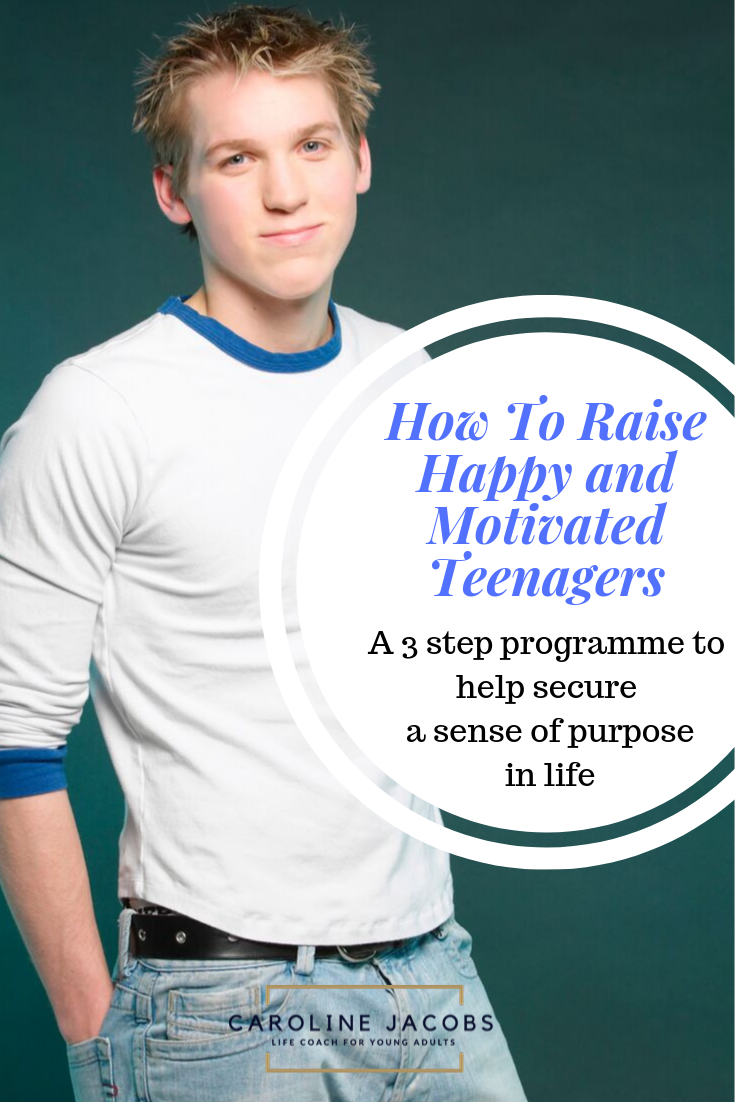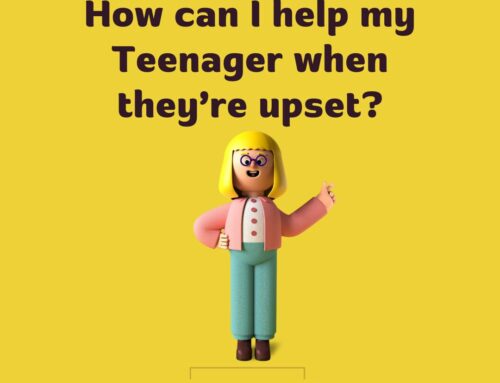We all want our children to be happy, don’t we? As parents we do everything we can to make them not just happy today but for the rest of their lives.
But how many of us feel like we’ve failed when our children reach adolescence? Our happy smiling children suddenly turn into morose teenagers, moping around the house, lost in teenage angst. Frustrated by our failure to make them happy, how many of us give in to the temptation to demand that they ‘snap out of it’? Or try to bribe them back into happiness with expensive technology and branded clothing? Trust me, I’ve been there and worn those t-shirts.
As a mother of three adolescents and with twenty years’ experience as a high school teacher, I’ve learnt over the years that the challenges our teenagers face during adolescence are far too great for quick fixes to overcome. Trapped between the conflicting roles of being a child but becoming an adult, teenagers often lose confidence in who they are and struggle to find a purpose in their lives. Frustrated by the lack of control in their lives, many slip into behaviours which may affect their long term mental health.
Here are three steps which can make a big difference.
Step 1. It’s your brain, not ‘you’.
As Teens leave the protection of their parents and experiment with aspects of a new adult life, they encounter an unexpected range of problems they do not possess the skill set to deal with. This dents their confidence, makes them retreat to the safety of their room, and blames themselves for not being able to cope.
In the short term, this is fine – it gives them the chance to lick their wounds (most often dented pride) and recover from the experience. However, no-one steps into the future by keeping the past. If they are to find a sense of purpose in their lives, they first have to find the confidence to face the future, whatever it holds . Our teens need to realise that their initial discouraging experiences of the adult world are just part of a natural process everyone suffers at the onset of adolescence. This is where understanding the ‘why’ helps them to understand that they are not responsible for ‘failing’ – they are just the victim of the incredible transformation that is taking place in their brains.
Understanding the brain
During adolescence, the brain enters a new phase of development. The amygdala – the part of the limbic system in the brain that determines our emotional responses – develops at a faster rate than the pre-frontal cortex, the part of the brain that moderates our behaviour with rational thought. The brain, therefore, becomes particularly receptive to the neurotransmitter dopamine. This is the hormone that makes us feel excited when we encounter new experiences.
Teenagers are driven, therefore, to seek out new experiences. It is vital that they do so. By seeking out these new experiences, teenagers gain the confidence and skills they need to break away from the parent group and set themselves up as independent adults. If they didn’t, we would not enjoy the benefits of the diffuse gene pool that our species relies upon for its survival.
It is a particularly good time for all this this to happen. Our brains never replicate the maximum capacity to learn that it reaches by late adolescence.
Throughout adolescence, the hippocampus shares the same rate of development as its neighbour, the amygdala. The hippocampus turns short term memories into lifelong ones. It plays a major part in the creation of habits. Many of the habits we exhibit as an adult are learned as an adolescent.
In addition, the number of neurons and synapses available to us are at their greatest number during adolescence. Neurons electronically store what we know. As we learn new things, these neurons seek to join with other related neurons (e.g. ‘brown’ in one neuron, ‘table’ in another, join to create the concept of ‘brown table’). These connections are called synapses. Towards the end of adolescence, the brain naturally prunes away any synapses not being regularly used and strengthens those that are. It’s an exhausting process and contributes to the sense of disorientation many teenagers feel.
By late adolescence, our brain has pretty much hotwired into place the type of adult our teenagers will become. Although the old dog can learn new tricks, it will never find it as easy as when he was a puppy.
It’s great when our teens realise that they only have a relatively short period of opportunity to accumulate as many experiences as they can. Some of those will be enjoyable and some less so. They can be comforted by the fact that they are being naturally driven to go out in the world and yet sometimes fall flat on their faces. That’s life!
Minding our language
As a teacher, I sometimes came across parents who thought it was okay to publicly criticise their children (usually as a way of hiding their own failings!).Can you imagine the effect upon a child of a parent they depend upon for love and security openly calling them ‘lazy’ or ‘useless’? I can imagine many a child thinking ‘I must be stupid. My dad says I am and he knows everything.’.
I learnt a lot from those encounters and vowed to never disparage my children, especially as they became sensitive teenagers. I focused on their many strengths and sought to ignore those minor things that annoyed me. At times they would state that they weren’t good at something or other. I would challenge it with the word ‘yet’ and remind them of the skill set they did have that would help them overcome the challenge.
The more honest positive feedback they received, the more confident they became in themselves. I helped them build up an identity for themselves that focused on their strengths rather than their weaknesses. This allowed them to overcome the low self-esteem that the brain naturally nurtures throughout adolescence and helped them develop the confidence to seek out new experiences and experiment with new identities.
Step 3. Creating the future today – vision boards
. I wanted their vision of the future to reflect who they were.
I found Vision Boards to be the perfect mechanism through which they could identify their very own unique vision.
Vision Boards are a visual representation of what we want to do with our lives. I sat down with my teenagers and asked them to identify the different dimensions of life that were most important to them – relationships, spirituality, careers, hobbies, etc. I then asked them to choose their three most cherished values (e.g. helping others; working hard; being a supportive member of society, etc.). We discussed their character strengths. I took careful notes of what they said and presented them to them.
‘This is who you are’, I said. ‘Aren’t you awesome! If this is who you are, what type of future do you envisage for yourself?’, I asked them.
As you would expect, their answers were profound. They may have found it difficult to choose a specific career, but they were able to identify what type of career they would like.
‘I want to be able to help people. I’m good at listening to people. I’m good at Science. Perhaps I could do something in medicine’, said my daughter, signposting the future she was to go on to enjoy.
I finished by asking them to find images on the internet that reflected all those elements and to create a collage that represented the future they wanted for themselves. By the end of the process each had a clear visual representation of who they were and the type of life they wanted in the future. I put their collages into frames and hung them in their bedrooms.
I knew it wasn’t going to be enough to just hang the pictures. Our brains quickly ignore anything that it sees regularly. I wanted to find a way to make those collages living documents, something they could use to guide them through their life each and every day. I found it through action planning.
Once a year (close to their birthdays) I asked my teenagers to break their vision down into goals for the year. They recorded these in a journal. Then, each month we sat around the family table and broke those annual goals down into monthly targets. Those targets helped us to decide our action plans for the week and eventually our daily to-do lists. At the end of each day, as we sat down for our evening meal, we shared what we had done that day to make our dreams a reality. In the past I had got into the habit of asking them how their day had gone and become accustomed to a non-committal shrug and grunt as a response. My teenagers now talked enthusiastically about what they had done and did so with great pride. They not only had a sense of purpose, they also had a confidence in the control they had over their lives.









Leave A Comment